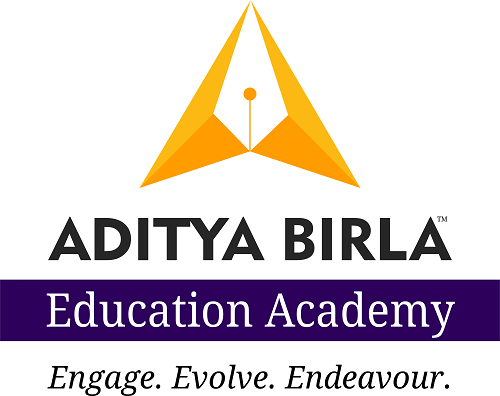Introduction:
A child's best phase of life is their schooling days. They develop into an individual due to the skills and knowledge they get in the classroom. That is the reason school is considered as a second home for every child.
Thus a teacher’s behaviour, teaching style and strategies plays a very important role. One of the most important strategies teachers use nowadays in the classroom is to develop a thinking classroom.
This approach goes beyond imparting information; it nurtures a mindset that prepares students for a lifetime of learning and adaptability.
What is a thinking classroom?
The idea of a "thinking classroom" has been increasingly popular in the field of education. It signifies a move away from rote learning and toward a more dynamic, student-centered classroom. As a teacher, developing a thinking atmosphere in the classroom is essential to produce critical thinkers, problem solvers, and lifelong learners.Hence, a thinking classroom is an ethos, a culture that penetrates every facet of the educational process. There students are actively involved in the learning process with their minds being continuously stimulated to -
- investigate,
- ponder, and
- analyse.
Even, a teacher usually adopts a multifaceted approach while creating a thinking classroom. This does not only involve teaching strategies but also involve the whole classroom learning environment along with teacher-student relation and interaction in the classroom.
Steps to follow while building a thinking classroom
1. Promoting an Inquiry-Based Culture
A culture of inquiry is important for a thinking classroom. It supports students in challenging presumptions, seeking clarification, and posing questions. This can be achieved in a number of methods, including:- Open-ended questioning: Teachers should encourage students to investigate and create their own inquiry rather than providing predefined answers to their queries. Teachers should ask more open ended questions rather than close ended questions and boost classroom thinking.
- Promoting discussion and debate: Students should be able to share ideas, discuss different points of view, and defend their positions during active and interesting class debates. So that the class becomes more interactive.
- Encouraging inquiry and discovery: Student’s must be provided with chances to carry out investigations in varied viewpoints, and establish links between various fields of study.
2. Applying Active Learning Techniques
Passive note-taking and traditional lectures frequently fall short of involving students and encouraging higher-order thinking. Teachers ought to use active learning techniques instead, which motivate students to take an active role in their education and classroom thinking. These tactics could consist of :- Activities for tackling problems: Students are able to use their knowledge and hone their critical thinking abilities when they are given real-world problem solving challenges.
- Collaborative learning: Assignments in groups and cooperative learning boosts classroom thinking by motivating students to cooperate, exchange ideas, and expand on one another's prior knowledge.
- Practical experiences: Students gain a deeper knowledge of subjects and are encouraged to be creative when they participate in experiments, simulations, and other hands-on activities of classroom thinking.
3. Establishing a Growth Mentality
A growth mindset is necessary for building thinking classroom. It is important to support students in accepting failure as a necessary part of learning and in seeing obstacles as chances for personal development. You can accomplish this by:- Encouraging self-reflection in students: It is a good way to help them see where they can make improvements and build self-efficacy.
- Celebrating the diversity of learning styles: Having an inclusive and encouraging learning environment is facilitated by acknowledging that students learn in a variety of ways. Honouring students' achievements in the classroom
4. Encouraging of Teacher-Student Partnership
The interaction between the teacher and the students is essential to foster a building thinking classroom. Rather than just imparting knowledge, teachers should take on the role of facilitators, supporting students along the way as they learn. This collaboration can be fostered by:- Active listening and understanding: Instructors should pay attention carefully to the students’ thoughts, queries, and worries to show a sincere interest in the students’ viewpoints.
- Appreciating the contributions of students: Students' sense of ownership and participation are increased when their contributions to class activities are acknowledged and valued.
- Giving timely and helpful criticism: It enables pupils to understand their areas of weakness and enhance their critical thinking abilities.
How ABEA can support a teacher in this area:
As everyone knows, education is evolving to meet the shifting demands of society. As a result, a teacher must stay updated on knowledge, educational trends, and other skills—something they typically cannot accomplish during their regular workday. This could entail improving their content knowledge, acquiring new skills, or enhancing their existing skill sets.By keeping up with current trends, skill sets, and information, teachers who work on upskilling through several teacher training programs are better able to impart modern trends to their students. This way they experience a boost in self-confidence. They also help in raising Students' morale because they are aware that their teacher would inform them about the current trends and developments.
Our primary goal at Aditya Birla Education Academy (ABEA) is to fulfil the instructors' desire to study and develop. Our goal at ABEA is to give in-service teachers the chance to get training in a variety of areas of concern. Depending on the needs of the school and their teachers, this consists of both synchronous and asynchronous sessions in addition to in-person interventions. A variety of upskilling and training programs are available for educators, all geared toward providing prompt and efficient support. This is the reason ABEA is known as one of the best teacher training institute in india. The methods and course material may differ from one course to the next, but the ultimate goal of our training sessions is to improve the learning environment for students and get teachers ready for the latest shifts in demand.
Conclusion:
To sum up, ABEA provides a platform to all the educators who want to upskill themselves. It provides all sorts of support to teachers in their skill development like different teaching strategies and skills.For a teacher developing a thinking classroom is a continuous effort that calls for commitment, imagination, and a love of developing lifelong learners. Incorporating active learning strategies, encouraging a growth mindset, fostering a teacher-student partnership, and embracing an inquiry-based culture can help us build classroom environments where students are not only well-versed in material content but also have the skills necessary to think critically, solve problems creatively, and make meaningful contributions to their community.
FAQ's
Q1. What does a “thinking classroom” actually mean in modern education?
A thinking classroom is a learning environment where students don’t just absorb information but actively analyse, question, create, and reflect. It prioritises reasoning, problem-solving, metacognition, and student autonomy over passive note-taking.
Q2. Why are thinking classrooms important in India’s competency-based education era?
NEP 2020 demands higher-order thinking, application, and real-world problem-solving. Thinking classrooms help students move from rote learning to analytical and creative competencies—which are essential for board exams, careers, and global competitiveness.
Q3. What are the core elements required to build a thinking classroom?
Strong questioning strategies, collaborative problem-solving, visible thinking routines, student voice, reflective tasks, and a classroom culture that encourages curiosity, mistakes, and exploration.
Q4. How do thinking routines improve students’ learning outcomes?
Routines like “See-Think-Wonder,” “Think-Pair-Share,” or “Claim-Support-Question” help students slow down thinking, articulate reasoning, and engage deeply with concepts. They build metacognition, clarity, and confidence.
Q5. What type of teacher mindset is needed for a thinking classroom?
Teachers must shift from “sage on the stage” to “guide on the side.” This includes valuing student questions, encouraging diverse viewpoints, modelling critical thinking, and prioritising inquiry over memorisation.
Q6. How can teachers use questioning to activate deeper thinking?
By asking open-ended questions, prompting “why/how,” encouraging alternative perspectives, and using crossover questions that compare, contrast, or evaluate—rather than questions with one fixed answer.
Q7. What role does collaboration play in a thinking classroom?
Peer discussions, group challenges, and co-constructed solutions allow students to test ideas, debate, justify reasoning, and co-build knowledge. Collaboration develops communication, empathy, and higher-order thinking skills.
Q8. How can teachers integrate metacognition into everyday teaching?
Through reflection journals, exit tickets, “What worked today?” discussions, self-assessment tools, and prompts like “How did you reach this answer?” or “What strategy did you use?”
Q9. What classroom environment helps thinking flourish?
Flexible seating, whiteboards for every group, visual thinking tools, anchor charts, accessible resources, and a safe emotional space where students feel comfortable taking risks and making mistakes.
Q10. How can technology support thinking classrooms?
Tools like digital whiteboards, AI-enhanced brainstorming apps, collaborative platforms, and multimedia prompts help students visualise ideas, co-construct knowledge, and engage in interactive, inquiry-based learning.
Q11. How do thinking classrooms support students with diverse learning needs?
They offer multiple pathways to understanding-visual, verbal, kinesthetic, collaborative, reflective. Students can think aloud, draw, build, map, or model concepts, making learning accessible to all learning styles and cognitive levels.
Q12. How can teachers measure thinking instead of just checking correct answers?
Through process-based assessments: reasoning explanations, concept maps, reflective responses, performance tasks, project-based learning, and rubrics that evaluate understanding, creativity, and problem-solving-not just memorized output.







